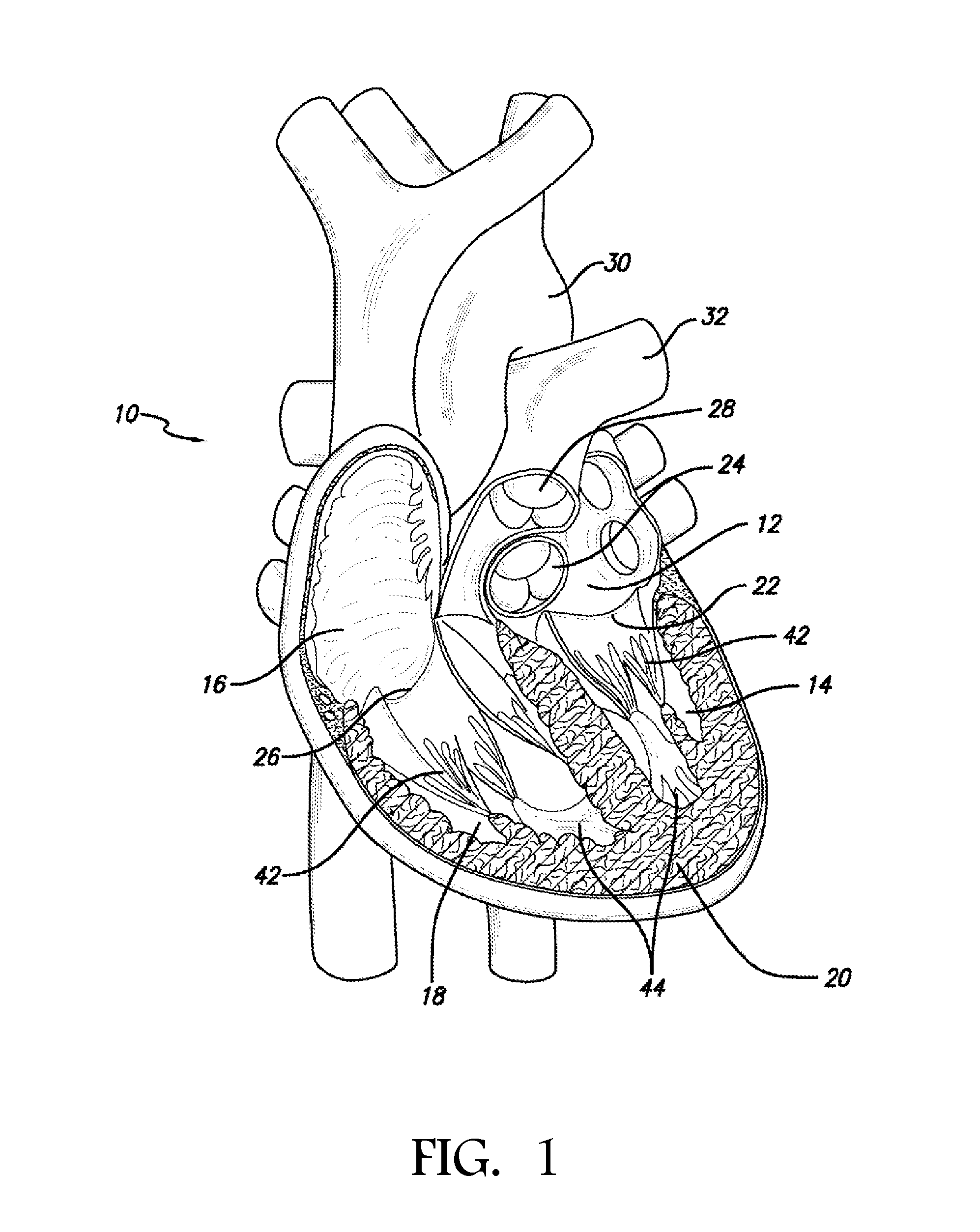Transapical mitral valve repair device
a technology repair device, which is applied in the field of transapical mitral valve repair device, can solve the problems of affecting the proper functioning of one or more of the valves of the heart, prolapse and regurgitation, and obstruction of blood flow, and achieves the effect of facilitating mitral valve repair
- Summary
- Abstract
- Description
- Claims
- Application Information
AI Technical Summary
Benefits of technology
Problems solved by technology
Method used
Image
Examples
Embodiment Construction
[0054]In accordance with the methods of embodiments herein, the heart may be accessed through one or more openings made by a small incision(s) in a portion of the body proximal to the thoracic cavity, for instance, in between one or more of the ribs of the rib cage, proximate to the xyphoid appendage, or via the abdomen and diaphragm. Access to the thoracic cavity may be sought so as to allow the insertion and use of one or more thorascopic instruments, while access to the abdomen may be sought so as to allow the insertion and use of one or more laparoscopic instruments. Insertion of one or more visualizing instruments may then be followed by transdiaphragmatic access to the heart. Additionally, access to the heart may be gained by direct puncture (i.e., via an appropriately sized needle, for instance an 18 gauge needle) of the heart from the xyphoid region. Access may also be achieved using percutaneous means. Accordingly, the one or more incisions should be made in such a manner a...
PUM
 Login to View More
Login to View More Abstract
Description
Claims
Application Information
 Login to View More
Login to View More - R&D
- Intellectual Property
- Life Sciences
- Materials
- Tech Scout
- Unparalleled Data Quality
- Higher Quality Content
- 60% Fewer Hallucinations
Browse by: Latest US Patents, China's latest patents, Technical Efficacy Thesaurus, Application Domain, Technology Topic, Popular Technical Reports.
© 2025 PatSnap. All rights reserved.Legal|Privacy policy|Modern Slavery Act Transparency Statement|Sitemap|About US| Contact US: help@patsnap.com



